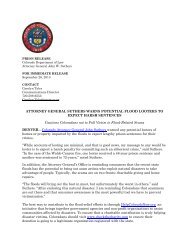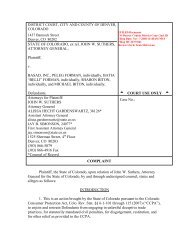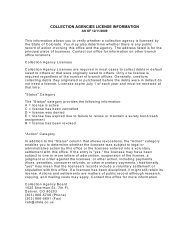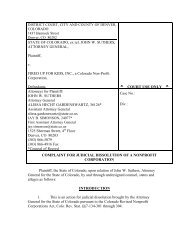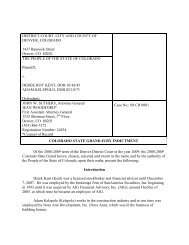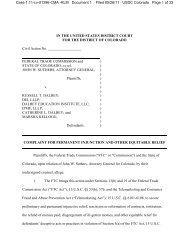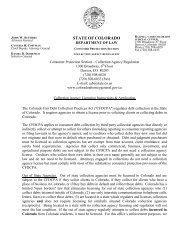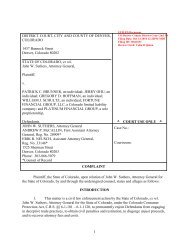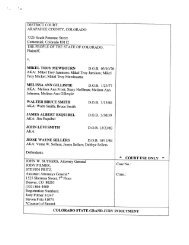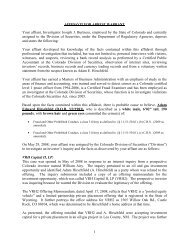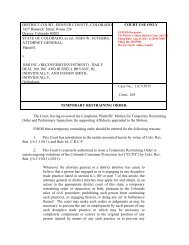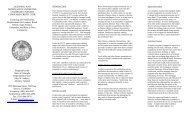brief in opposition to motion to dismiss - Colorado Attorney General
brief in opposition to motion to dismiss - Colorado Attorney General
brief in opposition to motion to dismiss - Colorado Attorney General
You also want an ePaper? Increase the reach of your titles
YUMPU automatically turns print PDFs into web optimized ePapers that Google loves.
School districts exercise no discretion over the amount of the mill levy for the localshare, which is fixed by statute. Each year, the State <strong>in</strong>forms the school districts what their localmill levy will be for the upcom<strong>in</strong>g budget year, and the school districts develop and adopt theirannual budgets with<strong>in</strong> those limits. Follow<strong>in</strong>g adjustments based on local assessed valuationsand district pupil counts, the <strong>Colorado</strong> Department of Education certifies the f<strong>in</strong>al mill levy <strong>to</strong>the school districts by December 10 of each year. The districts then certify the mill levy <strong>to</strong> thecounty or counties <strong>in</strong> which they are situated, and the county commissioners levy the tax. COLO.REV. STAT. § 39-1-111(1). School districts have no control over the amount of the mill levy andare not the government that levies and collects the taxes. To call a school district a “tax<strong>in</strong>gauthority” <strong>in</strong> this context dis<strong>to</strong>rts the mean<strong>in</strong>g of “authority” past all reasonable limits. 24In Claremont School District v. Governor, 142 N.H. 462, 703 A.2d 1353 (1997), the NewHampshire Supreme Court addressed the issue of which entity is the tax<strong>in</strong>g authority forproperty taxes levied <strong>to</strong> support public schools. As <strong>in</strong> <strong>Colorado</strong>, New Hampshire public schoolsreceived their fund<strong>in</strong>g from local property taxes, direct legislative appropriations, and federalaid. Property taxes contributed <strong>to</strong> between 74 and 89 percent of the <strong>to</strong>tal school revenue. TheNew Hampshire constitution required that taxes be reasonable and “<strong>in</strong> due proportion.” Thepla<strong>in</strong>tiffs argued that the <strong>to</strong>tal value of property subject <strong>to</strong> taxation for local school revenuevaried among the cities and <strong>to</strong>wns of New Hampshire. The state argued that the school tax was alocal tax and thus met the constitutional requirement of reasonability and proportionality. Inrul<strong>in</strong>g that the system of unequal mill levies violated that state’s constitution, the NewHampshire Supreme Court ruled:23 See Compla<strong>in</strong>t 122 and 171.31



